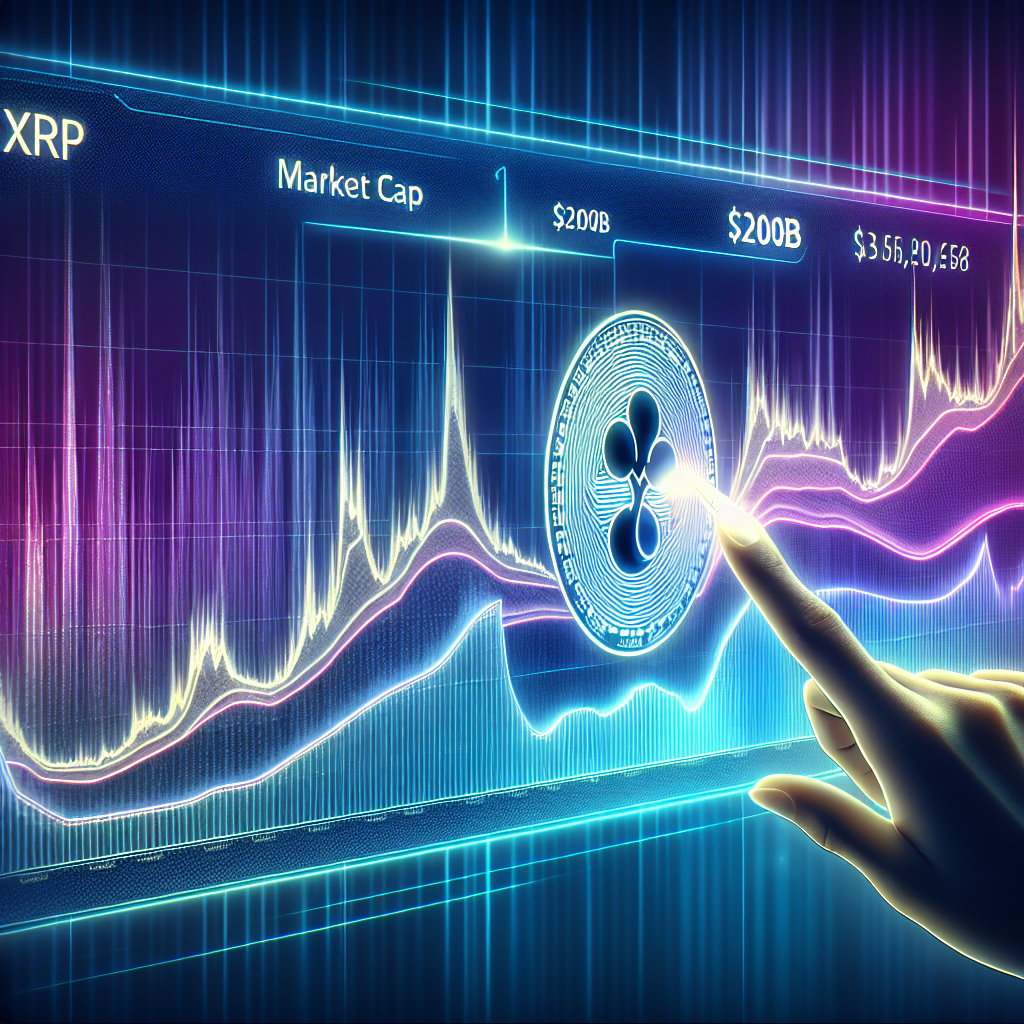Ethereum Dominates as Crypto Holder Counts Soar

Ethereum Dominates as Crypto Holder Counts Soar
June 9, 2025 - Ethereum continues to reign supreme in the cryptocurrency world, evidenced by its swelling ranks of holders. Amidst the ever-turbulent digital asset landscape, Ethereum's robust ecosystem, technological advancements, and expanding real-world applications have solidified its position as a leading blockchain platform. The surge in Ethereum holders reflects a growing confidence in its long-term potential, even as market volatility persists. This article delves into the dynamics of Ethereum's growing popularity, its recent price action, technical analysis, and potential trading strategies.
Ethereum's Growing Popularity: A Deep Dive
The rise in the number of Ethereum holders isn't just a superficial trend. It's indicative of a deeper shift in how people perceive and interact with blockchain technology. Ethereum's utility extends far beyond simply being a digital currency. It serves as the backbone for a vast array of decentralized applications (dApps), decentralized finance (DeFi) protocols, and non-fungible tokens (NFTs). This multifaceted functionality attracts a diverse range of users, from individual investors to institutional players looking to leverage the power of blockchain technology.
The Ethereum blockchain's capacity to facilitate smart contracts, self-executing agreements written in code, has been a game-changer. These contracts automate processes, eliminate intermediaries, and enhance transparency, making them attractive for various industries, including supply chain management, healthcare, and voting systems. The potential for innovation built on Ethereum is virtually limitless, further fueling its growth and adoption.
Decentralized Applications (dApps): The Foundation of Ethereum's Ecosystem
At the heart of Ethereum's appeal is its ability to host decentralized applications (dApps). Unlike traditional applications that rely on centralized servers and authorities, dApps operate on a peer-to-peer network, making them more resilient to censorship and single points of failure. The Ethereum blockchain provides the infrastructure and tools necessary for developers to create and deploy dApps, fostering a vibrant and innovative ecosystem.
Decentralized Finance (DeFi): Revolutionizing the Financial Industry
Decentralized Finance (DeFi) has emerged as one of the most exciting and disruptive applications of Ethereum. DeFi protocols aim to replicate traditional financial services, such as lending, borrowing, and trading, on a decentralized platform. This allows users to access financial services without relying on traditional intermediaries like banks or brokers. The transparency, accessibility, and efficiency of DeFi protocols have attracted a large number of users, driving demand for Ethereum as the underlying infrastructure.
Non-Fungible Tokens (NFTs): Transforming Digital Ownership
Non-Fungible Tokens (NFTs) have revolutionized the concept of digital ownership, allowing creators to tokenize unique assets, such as artwork, music, and virtual real estate. NFTs are stored on the Ethereum blockchain, providing verifiable proof of ownership and provenance. The popularity of NFTs has exploded in recent years, with artists, musicians, and collectors flocking to the Ethereum ecosystem to create, buy, and sell digital assets. This has further solidified Ethereum's position as a leading blockchain platform and driven demand for ETH.
Ethereum 2.0: Addressing Scalability Challenges
One of the major challenges facing Ethereum has been its scalability limitations. As the network grew in popularity, transaction fees soared, and transaction times slowed down. To address these issues, the Ethereum community embarked on a massive upgrade known as Ethereum 2.0, which aims to transition the network to a more scalable and energy-efficient proof-of-stake (PoS) consensus mechanism. While the transition to Ethereum 2.0 is a complex and ongoing process, it promises to significantly improve the network's performance and scalability, paving the way for even greater adoption.
Ethereum Price Analysis: Current Market Conditions
As of June 9, 2025, Ethereum (ETH) is trading at $2,541.38, reflecting a slight increase of 1.07% from the previous close. Binance - ETH Price This valuation is a snapshot in time, reflecting the continuous ebb and flow of market forces acting upon this major cryptocurrency. Recent price action has been characterized by volatility, with periods of upward momentum interspersed with pullbacks.
Stock market information for Ethereum (ETH)
- Ethereum is a crypto in the CRYPTO market.
- The price is 2541.38 USD currently with a change of 26.96 USD (0.01%) from the previous close.
- The intraday high is 2542.7 USD and the intraday low is 2482.65 USD.
Recent Price Action
Ethereum has experienced a volatile period, mirroring the broader cryptocurrency market sentiment. Significant price swings have been observed, influenced by factors such as regulatory news, macroeconomic events, and technological developments within the Ethereum ecosystem. Recently, Ethereum faced resistance around the $2,600 level, struggling to break through consistently. This resistance level has acted as a ceiling, preventing further upward movement in the short term.
Following the resistance at $2,600, ETH has seen increased buying pressure that continues to push its current pricing slightly higher as investors and traders alike continue to consider its long-term position in the market. On the lower side, strong support has been identified around the $2,450 mark, which has prevented further downside movement. The resilience at this level underscores investor confidence and potential accumulation at lower price points. The interplay between these support and resistance levels defines the current trading range for Ethereum.
Technical Chart Patterns
Several technical chart patterns are currently forming or have recently been broken, offering insights into potential future price movements. One pattern that has gained attention is a symmetrical triangle. This pattern is characterized by converging trendlines, indicating a period of consolidation. As the price oscillates within the triangle, traders anticipate an eventual breakout, which could lead to a significant price move in either direction.
The direction of the breakout from the symmetrical triangle is crucial. A breakout above the upper trendline would suggest bullish momentum, potentially leading to further price appreciation. Conversely, a breakdown below the lower trendline would signal bearish pressure, potentially leading to a price decline. Traders often use volume confirmation to validate breakouts, looking for a surge in trading volume during the breakout to confirm its strength and validity.
Another pattern that has been observed is a potential ascending triangle forming on the daily chart. An ascending triangle is characterized by a flat upper trendline (resistance) and an ascending lower trendline (support). This pattern is typically considered a bullish continuation pattern, suggesting that the price is likely to break out above the resistance level. However, it's essential to monitor the price action closely and confirm the breakout with increased volume to avoid false signals.
The appearance of these patterns indicates that the market is currently in a state of indecision, with both buyers and sellers vying for control. Traders and analysts are closely monitoring these patterns to anticipate potential price movements and make informed trading decisions.
Key Support and Resistance Levels
Identifying key support and resistance levels is crucial for traders as these levels can act as potential entry and exit points. For Ethereum, the following levels are currently being watched:
Resistance Levels:
- $2,600: This level has acted as a significant resistance in recent weeks, preventing sustained upward movement. A break above this level could indicate a shift in market sentiment and potential for further gains.
- $2,750: This represents a higher resistance level that could be tested if the price breaks above $2,600. Breaching this level would likely attract further buying interest and could pave the way for a move towards higher targets.
Support Levels:
- $2,450: This level has provided strong support, preventing further downside movement. A break below this level could signal bearish pressure and potential for further declines.
- $2,300: This represents a lower support level that could be tested if the price breaks below $2,450. Holding this level is crucial to prevent a more significant downtrend.
These support and resistance levels are not static and can change over time as market conditions evolve. Traders should continually monitor these levels and adjust their strategies accordingly.
Technical Indicators
Analyzing technical indicators provides further insights into Ethereum's price action and potential future movements. Several key indicators are currently being watched by traders and analysts:
Moving Averages:
Moving averages help smooth out price data and identify trends. The 50-day and 200-day moving averages are commonly used to gauge the overall trend direction. If the 50-day moving average is above the 200-day moving average, it indicates a bullish trend, while the opposite suggests a bearish trend.
Currently, the 50-day moving average is hovering around $2,500, while the 200-day moving average is around $2,350. The fact that the 50-day moving average is above the 200-day moving average suggests that Ethereum is still in a long-term uptrend. However, the price is currently trading below the 50-day moving average, indicating potential short-term weakness. A break above the 50-day moving average could signal a resumption of the uptrend.
Relative Strength Index (RSI):
The Relative Strength Index (RSI) is a momentum indicator that measures the magnitude of recent price changes to evaluate overbought or oversold conditions in the price of an asset. RSI values range from 0 to 100. An RSI value above 70 indicates overbought conditions, suggesting that the price may be due for a correction. Conversely, an RSI value below 30 indicates oversold conditions, suggesting that the price may be due for a bounce.
Currently, the RSI for Ethereum is around 55, indicating a neutral stance. This suggests that the price is neither overbought nor oversold, and there is no immediate signal for a significant price move. However, traders should monitor the RSI closely for any changes in momentum that could provide clues about future price direction.
MACD (Moving Average Convergence Divergence):
The Moving Average Convergence Divergence (MACD) is a trend-following momentum indicator that shows the relationship between two moving averages of a security's price. The MACD is calculated by subtracting the 26-day exponential moving average (EMA) from the 12-day EMA. A 9-day EMA of the MACD, called the "signal line," is then plotted on top of the MACD. Crossovers of the MACD line above or below the signal line can be used to generate buy or sell signals.
Currently, the MACD line is slightly above the signal line, indicating a potential bullish crossover. However, the MACD histogram is showing declining bars, suggesting that the bullish momentum may be weakening. Traders should monitor the MACD closely for further signals that could confirm the trend direction.
Trading Volume:
Trading volume provides valuable insights into the strength of price movements. High trading volume during a price rally suggests strong buying pressure, while high trading volume during a price decline suggests strong selling pressure. Conversely, low trading volume during a price move suggests that the move may be unsustainable.
Recently, trading volume has been moderate, suggesting that there is no strong conviction in either direction. Traders should monitor trading volume closely to confirm the validity of any potential breakouts or breakdowns from key support and resistance levels.
Market Sentiment and Fundamental Factors
The current market sentiment surrounding Ethereum is cautiously optimistic. While the recent price action has been volatile, the long-term outlook remains positive due to Ethereum's robust ecosystem and ongoing development efforts. Several fundamental factors are influencing Ethereum's price:
- Ethereum 2.0 Progress: The ongoing transition to Ethereum 2.0 is a major catalyst for the price. Positive developments, such as successful testnet launches and protocol upgrades, can boost investor confidence and drive demand for ETH. Conversely, delays or setbacks in the transition can weigh on the price.
- DeFi Adoption: The continued growth of the DeFi sector is a significant driver of demand for Ethereum. As more users and institutions adopt DeFi protocols, the demand for ETH as the underlying collateral and gas token increases. However, regulatory concerns and potential security vulnerabilities in DeFi protocols can pose risks to the price.
- NFT Market: The health of the NFT market also impacts Ethereum's price. A thriving NFT market generates significant transaction fees and demand for ETH. However, a slowdown or correction in the NFT market can weigh on the price.
- Regulatory Developments: Regulatory developments play a crucial role in shaping the sentiment surrounding cryptocurrencies. Positive regulatory clarity can attract institutional investors and boost confidence, while restrictive regulations can dampen demand and lead to price declines. Traders should closely monitor regulatory developments in key jurisdictions.
- Broader Market Trends: Ethereum's price is also influenced by broader market trends, such as the performance of Bitcoin and the overall macroeconomic environment. Positive developments in the broader cryptocurrency market can lift Ethereum's price, while negative developments can drag it down.
Potential Trading Strategies
Based on the current technical and fundamental outlook, traders may be considering the following strategies:
- Breakout Trading: Traders may be looking to capitalize on potential breakouts from the symmetrical or ascending triangle patterns. A breakout above the resistance level of $2,600 could be seen as a buying opportunity, while a breakdown below the support level of $2,450 could be seen as a selling opportunity. Traders should use volume confirmation and other technical indicators to validate breakouts.
- Range Trading: Traders may be employing a range trading strategy, buying near the support level of $2,450 and selling near the resistance level of $2,600. This strategy aims to profit from the price oscillations within the defined range. Traders should use stop-loss orders to limit potential losses if the price breaks out of the range.
- Trend Following: Traders may be following the long-term uptrend by buying on dips and holding for the long term. This strategy is based on the belief that Ethereum's price will continue to appreciate due to its robust ecosystem and ongoing development efforts. Traders should be prepared to withstand short-term volatility and potential corrections.
- Hedging: Traders may be using hedging strategies to protect their portfolios from potential price declines. This can involve shorting Ethereum futures or buying put options to offset potential losses in their ETH holdings.
Technical Analyses
Recent technical analyses offer varied perspectives on Ethereum's price action:
1. TipRanks Analysis: The Moving Average Convergence Divergence (MACD) indicator is at -152.37, suggesting a 'Buy' signal. However, the 20-day exponential moving average is $2,569.36, while the current price is $2,541.38, indicating a 'Sell' signal. (TipRanks - ETH Technical Analysis)
2. Investing.com Analysis: The Relative Strength Index (RSI) is at 50.205, indicating a neutral stance. The MACD is at 5.65, suggesting a 'Buy' signal. However, the Stochastic Oscillator (9,6) is at 38.737, indicating a 'Sell' signal. (Investing.com - ETH Technical Analysis)
These analyses highlight mixed signals in Ethereum's current price action, reflecting the complexity and volatility of the cryptocurrency market.
Short-Term Price Analysis
Based on the current technical setup and market conditions, here's a short-term price analysis for Ethereum:
Bullish Scenario:
If Ethereum can break above the resistance level of $2,600, it could trigger a rally towards higher targets. The next potential target would be $2,750, followed by $2,900. A successful breakout above $2,600 would likely attract further buying interest and could pave the way for a sustained uptrend.
Bearish Scenario:
If Ethereum fails to break above $2,600 and instead breaks below the support level of $2,450, it could trigger a decline towards lower targets. The next potential target would be $2,300, followed by $2,150. A breakdown below $2,450 would likely signal bearish pressure and could lead to a more significant downtrend.
The short-term price action will likely be influenced by the outcome of the current consolidation phase. Traders should closely monitor the price action around the key support and resistance levels to anticipate potential price movements.
Expert Analysis: Video Insights
For further insight, here are two relevant YouTube videos offering expert analysis on Ethereum:
Video 1: Ethereum Price Prediction 2025: $10,000 ETH or Just Hype? Expert Analysis & Insights
Ethereum Price Prediction 2025
Video 2: Bitcoin vs. Ethereum: Mark Cuban’s Insights on the Crypto Market. #markcuban #bitcoin #ethereum
Bitcoin vs Ethereum: Mark Cuban's Insights
Conclusion
Ethereum's growing popularity and increasing holder counts are testament to its fundamental strength and potential. However, the cryptocurrency market remains inherently volatile, and trading Ethereum involves significant risks. The price is subject to rapid and unpredictable fluctuations, influenced by a wide range of factors, including market sentiment, regulatory developments, and technological advancements.
Before making any trading decisions, it's crucial to conduct independent research, carefully assess your risk tolerance, and use appropriate risk management techniques. This includes setting stop-loss orders, diversifying your portfolio, and avoiding investing more than you can afford to lose. The information provided in this article is for informational purposes only and should not be construed as financial advice.
Ethereum's future remains bright, but navigating the cryptocurrency market requires a disciplined and informed approach. Stay informed, stay cautious, and trade responsibly.









